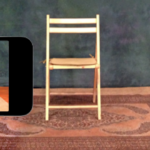Why Are More People Self Taping?
 In the fast paced world of casting, time is money. And planning and executing casting sessions is becoming more and more of a challenge, especially in the smaller markets. I’ve seen a substantial increase in self taping requests in the last few years. And it’s trend that is gaining momentum throughout the industry. Places like New York and LA are rapidly adding self taping sessions and many of the smaller markets like Atlanta, Pittsburgh, New Mexico, Texas, Detroit and others have been increasingly doing self tapes so actors don’t have to travel as much.
In the fast paced world of casting, time is money. And planning and executing casting sessions is becoming more and more of a challenge, especially in the smaller markets. I’ve seen a substantial increase in self taping requests in the last few years. And it’s trend that is gaining momentum throughout the industry. Places like New York and LA are rapidly adding self taping sessions and many of the smaller markets like Atlanta, Pittsburgh, New Mexico, Texas, Detroit and others have been increasingly doing self tapes so actors don’t have to travel as much.
Preparing To Self Tape
I know a lot of actors who go to a studio, pay a lot of money and get a good product. But with changes to cell phone and tablet technology, you are carrying around a highly capable camera right now. The question is, do you know how to use it? These tips will help you become a self tape guru in no time. I highly suggest you do a number of practice runs to get it right. Go through the entire process so you are fully prepared, have the right equipment and know exactly how you will set it up.
 The first step is to make sure you do your work. This isn’t a performance. It’s an audition. Casting isn’t looking for high production values or a finished product. They are looking for exactly what you would bring to a normal casting session. The only difference is you will be taping it yourself and you won’t get the benefit of the casting director giving you guidance on the scene. You can hold the script, dress to suggest and whatever else you would normally do.
The first step is to make sure you do your work. This isn’t a performance. It’s an audition. Casting isn’t looking for high production values or a finished product. They are looking for exactly what you would bring to a normal casting session. The only difference is you will be taping it yourself and you won’t get the benefit of the casting director giving you guidance on the scene. You can hold the script, dress to suggest and whatever else you would normally do.
10 Tips For Setting Up Your Self Tape Shoot
- Recording Settings – Use 1280×720 (for 16:9) or 640×480 (for 4:3) at 30 frames per second. Do NOT use 1080, FHD, QHD, UHD, 4K, 60 fps or anything else. Even the lowest quality settings on most cell phones will provide ample resolution for your self tape. Your files will be compressed and they can get REALLY big.
- Landscape – record in LANDSCAPE (sideways) mode. You can use 4:3 if your background on the sides is limited as your face will be exactly the same size as a 16:9. Portrait mode is not a good idea. Even if you sidebar it, your face is smaller than landscape. IF you have a limited background, it’s perfectly fine to record in 4:3. The only difference will be black bars on the sides of your audition while your face is the same size.
- Location and Background – Choose a good location with lots of ambient light if possible. It should be QUIET and large enough to not echo, so don’t use your bathroom. Pick your background carefully. Don’t use extremes like black or white. Don’t have anything distracting in the background. You can tape up a neutral colored sheet or backdrop on the wall. Just make sure the backdrop fills the frame. The focus should be on YOU with nothing to distract.
- Lighting – Ambient sunlight (not direct) is great. It’s soft and fills shadows. The key to lighting is to remove shadows from your face. If you can’t get ambient lighting you can use a combination of standing lamps, shaded lamps and overhead lights. Again, the goal is to remove as much of the shadows as possible, especially around the eyes.
- Sound – If you use a cell phone or tablet, don’t worry about an external microphone. Proper framing will put you within three to four feet of the camera. Have your reader stand off camera the same distance as you are or further so the sound will balance.
- Tripod – You should ALWAYS use a tripod. Slates can be hand held, but a tripod should be used when reading. You can find tripod holders for cell phones and tablets on Amazon. You want the camera lens just below your eye line. Not all tripods are tall enough for that. I’m 6′ 2” so I use a light stand (they are cheap on Amazon) instead. It adjusts to any height from sitting to standing. You won’t be panning so this works great.
- Slating – Oftentimes a casting director will ask you for a slate with profiles and a full body shot. If they ask for more than a profile, don’t worry about using the same background. You can go anywhere that has enough room for the camera operator to get far enough away. It’s okay if it isn’t perfectly lit and it’s okay to use portrait mode. They just want to see your body type.
- Reader Placement – The best place to put the reader is the same distance or greater from the camera. They should be off to the side that is closest to the lens so your eye line is close to the lens, but not directly into. You should make eye contact with your reader.
- Use A Good Reader – Have an actor read the other lines. It helps to have someone who will try to provide you with what you need. Ideally you would rehearse with them as well.
- Set A Time Limit – You should set a solid time limit because you can easily pass the point of diminishing returns. I suggest half an hour at most unless it’s a very large scene. Frankly if you take more than 6 takes, you’ll no longer be fresh.
Compression
 One of the largest issues for Casting is getting the proper file size and type. Too many actors lose out on their opportunity because casting is unable or unwilling to download a large file or find a program to read an odd format. Industry standards are MP4 files compressed below 1.5 mbps. If you use iSelf Tape you can be assured you will get the PERFECT compression every time.
One of the largest issues for Casting is getting the proper file size and type. Too many actors lose out on their opportunity because casting is unable or unwilling to download a large file or find a program to read an odd format. Industry standards are MP4 files compressed below 1.5 mbps. If you use iSelf Tape you can be assured you will get the PERFECT compression every time.
Delivery
Casting wants to be able to see all your scenes and slates in one place. Ideally you should have a page for each project that has your name, the project name, a link to your resume with demo reels and ALL your auditions for the project, including the slate, marked by Role. This can be daunting, which is why iSelf Tape automates the project.
Rather than sending a list of links, it sends ONE link. The page lists everything casting needs to see and allows them to download the files immediately to use in whatever system they use for their online casting. By putting it all in one place, it makes it MUCH easier for Casting to manage, which means they are more likely to move your audition to the next level.
Remember
Luck is when opportunity meets preparation. If you properly prepare for self taping, you will be able to make sure your self tape stands out from the rest and save yourself time, money and frustration. By using iSelf Tape, you will remove the guess work and deliver the perfect self tape audition… every time.

I have been putting actors (including myself) on tape for their auditions for almost 10 years. Also, I’ve worked with many actors to help them set up their own taping equipment, often putting together a list of things for them to look into. You are right that the technology has become totally amazing – in fact, I’m moving all my tapings to my new tablet! What you have provided here is an incredibly concise list of tips and challenges for those who do self-taping. Thanks so much. I will definitely be trying iSelf Tape very soon.